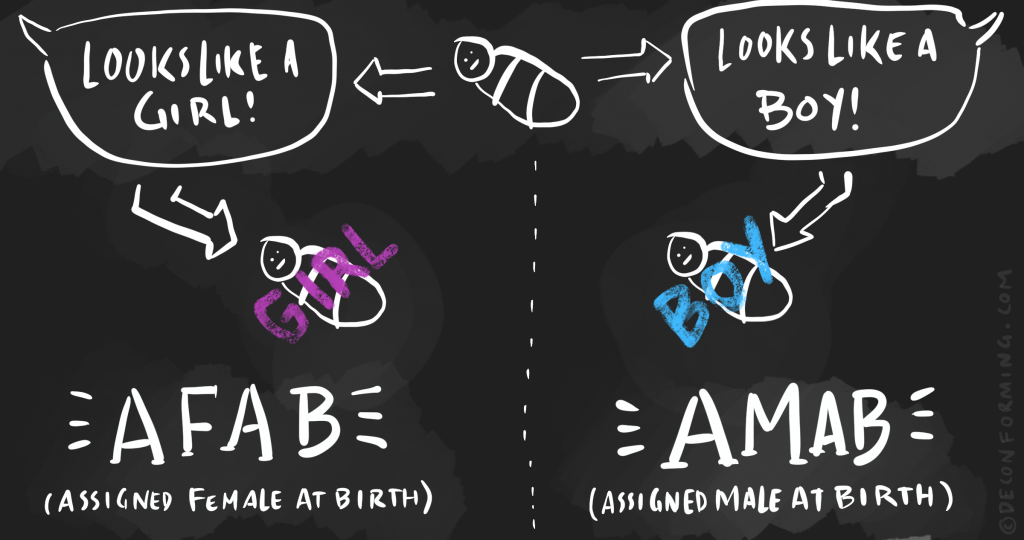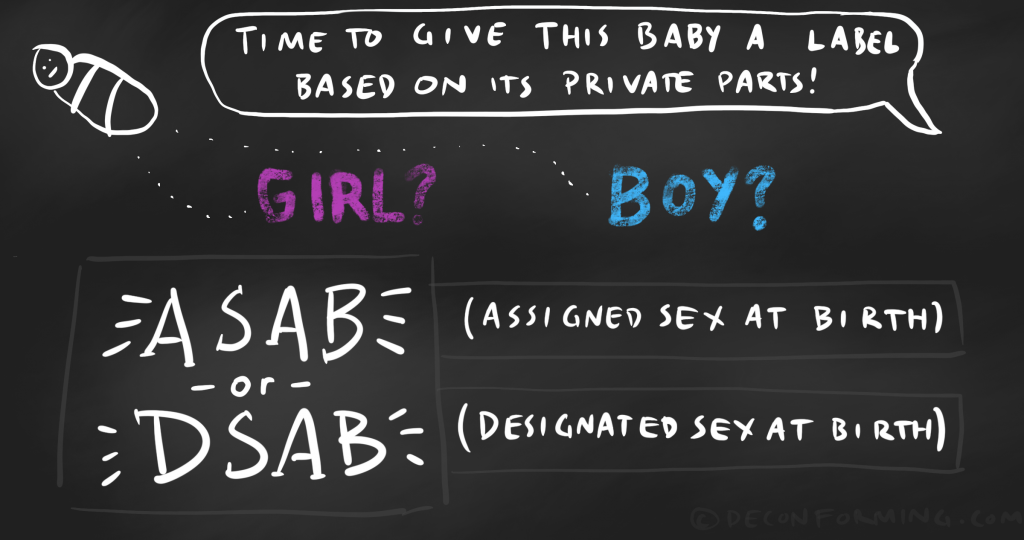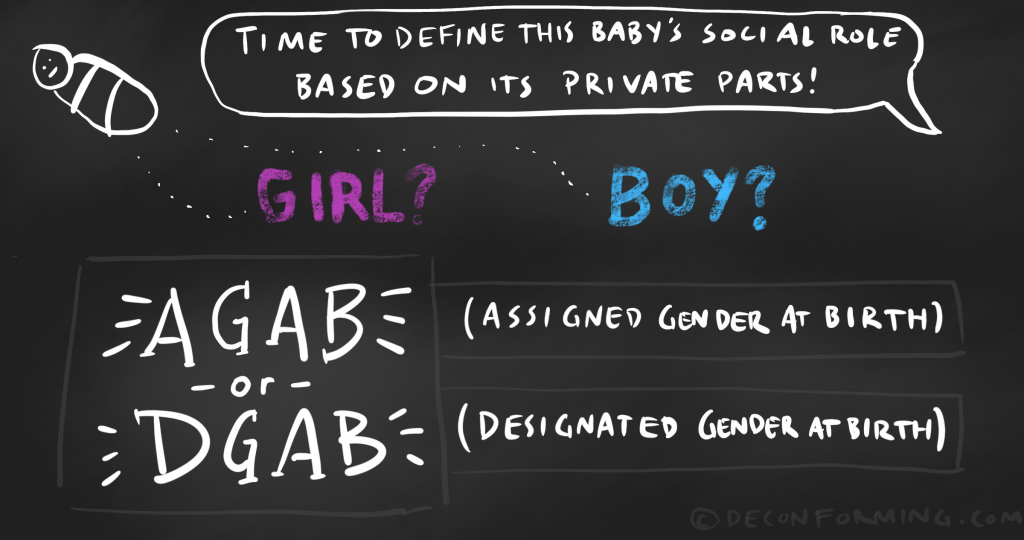Whether or not you realize it, you were probably assigned a sex and a gender when you were born. This assignment would have been based on what doctors observed about your body, and the conclusions they drew from their observations (whether accurate or not).
Once that assignment was made, it ended up on your birth certificate. Then on all your other legal documentation, like your social security, your driver’s license, your passport, and more.
That assignment made its way into a huge variety of places in your life, like the way your parents dressed you and treated you, the toys you were allowed to play with, the groups of kids you were told to spend time around, the types of sports you could sign up for, which bathrooms you were allowed to use, what behaviors you were rewarded and punished for—and many, many other things.
If you’re cisgender, you might not have thought a lot about this assignment that was given to you until now. But transgender folks think about that gender assignment a lot, because we were given the wrong assignment.
Most gender assignments are one of two things: male or female. Even though people are born with bodies that aren’t strictly male or female, usually doctors pick one of those to assign.
In the transgender community, we make reference to our assigned sex and gender often, since it’s a traumatic form of coercion we all have to overcome. Instead of talking about each other as though we “used to be a girl” or “used to be a boy,” trans people sometimes refer to our past based on the gender that was wrongly assigned to us. It never truly represented who we were. (For example, I was never a woman, but I was mistakenly assigned the female gender when I was born.)
There are a lot of different terms used to describe this assignment. Just about all of them are most often used in the form of acronyms. Here’s a quick breakdown of all the most commonly-used ones and what they mean.
AFAB and AMAB
Assigned Female At Birth & Assigned Male At Birth

These terms stand for “Assigned Female At Birth” and “Assigned Male At Birth” respectively. When spoken aloud, they’re usually pronounced as words: “A-fab” and “A-mab.” Transgender folks use these terms to indicate what sex marker was put on their birth certificate when they were born, often in contrast to the person they truly are.
DFAB and DMAB
Designated Female At Birth & Designated Male At Birth

These terms stand for “Designated Female At Birth” and “Designated Male At Birth” respectively. When spoken aloud, they’re usually pronounced as words: “D-fab” and “D-mab.” They are used interchangeably with AFAB and AMAB, having the same meaning. It seems that between the two sets, AFAB and AMAB are slightly more commonly used.
ASAB and DSAB
Assigned Sex At Birth & Designated Sex At Birth

ASAB and DSAB stand for “Assigned Sex At Birth” and “Designated Sex At Birth” respectively. When spoken aloud, they’re usually pronounced as words: “A-sab” and “D-sab.” These terms are used interchangeably. They refer specifically to the sex prescribed to a person by medical professionals when that person was born (as opposed to the gender).
AGAB and DGAB
Assigned Gender At Birth & Designated Gender At Birth

AGAB and DGAB stand for “Assigned Gender At Birth” and “Designated Gender At Birth” respectively. When spoken aloud, they’re usually pronounced as words: “A-gab” and “D-gab.” These terms are used interchangeably. They refer specifically to the gender prescribed to a person based on the sex that was prescribed by medical professionals when that person was born.
While sex and gender are two different things, people are usually assigned gender along with sex when they are born. So while these terms are different from ASAB/DSAB, they’re often used in similar contexts for similar reasons. Someone might say “my ASAB was female,” and it would be implied that their AGAB was also female. Maybe as our society advances in understanding that gender and sex are distinct, this will stop being the case.
CAFAB and CAMAB
Coercively Assigned Female At Birth & Coercively Assigned Male At Birth
These terms stand for “Coercively Assigned Female At Birth” and Coercively Assigned Male At Birth.” Yes, they’re just as dystopian as they sound.
Even though all of these abbreviations describe forms of coercion, CAFAB and CAMAB are about coercion that was done knowingly.
These terms describe intersex people (people born with a combination of male and female sex characteristics) who received nonconsensual medical treatments to coerce them into a binary sex and gender assignment. Many intersex people don’t learn that these procedures were performed on them until later on in life when they experience related medical issues, or their assigned gender conflicts enough with their self-identification for them to look into their medical history.
It’s horrific that this is done to intersex children, because nothing is wrong with them as they are.
These are all the common birth sex / birth gender acronyms. Got more clarifying questions? Leave me a comment and we’ll see if I can find an answer for you.
Other pages to check out:
